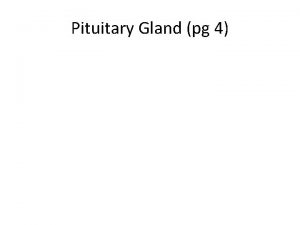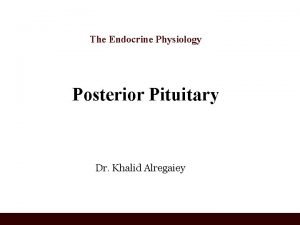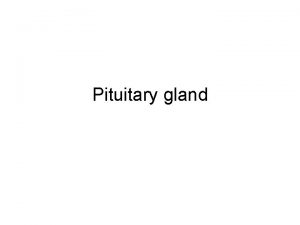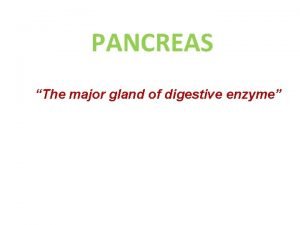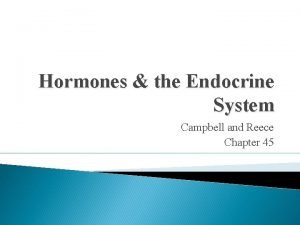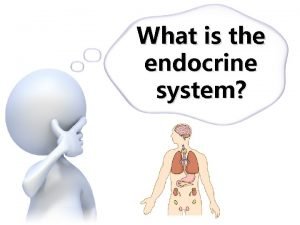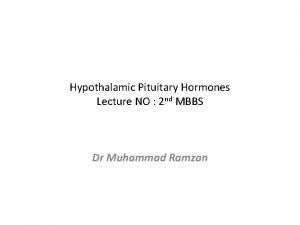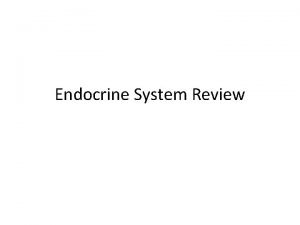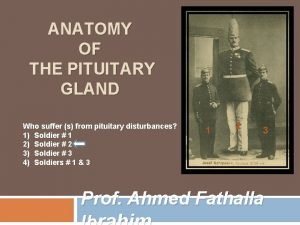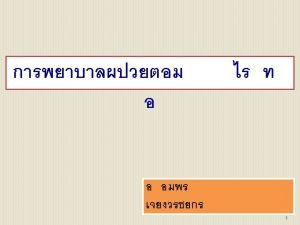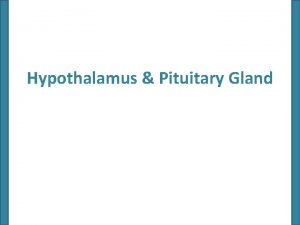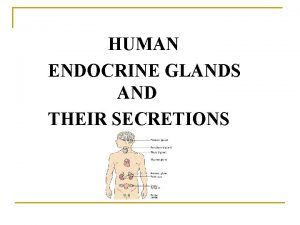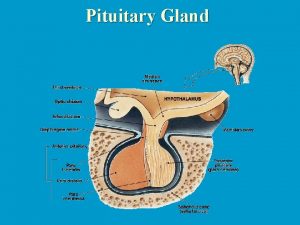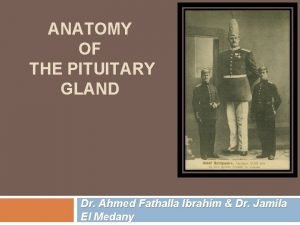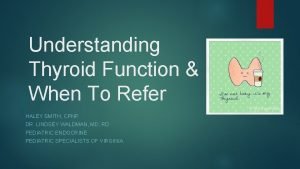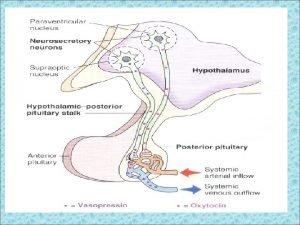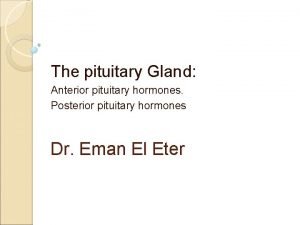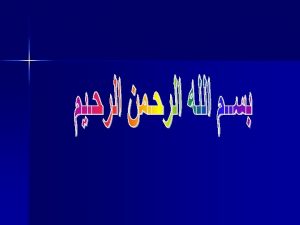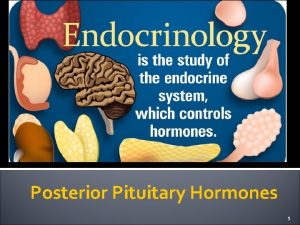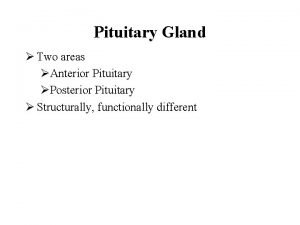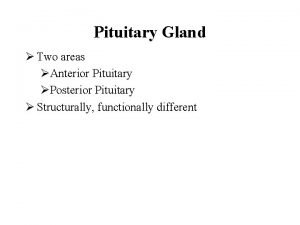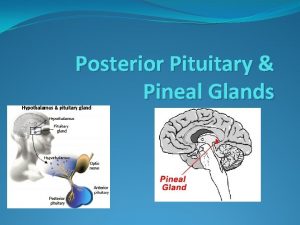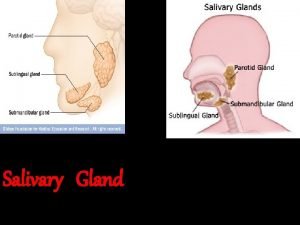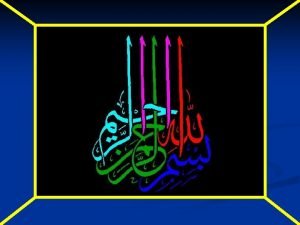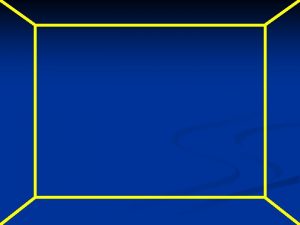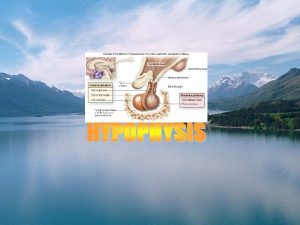POSTERIOR PITUITARY GLAND POSTERIOR PITUITARY HORMONES Posterior pituitary



















- Slides: 19

POSTERIOR PITUITARY GLAND

POSTERIOR PITUITARY HORMONES § Posterior pituitary gland releases 2 hormones: 1. Antidiuretic hormone (ADH) / arginine vasopressin (AVP). 2. Oxytocin § Produced in hypothalamic nuclei: Supraoptic nucleus (ADH) Paraventricular nucleus (Oxytocin)

POSTERIOR PITUITARY HORMONES • Both are transported slowly along the hypothalamohypophyseal tract in combination with carrier protein called neurophysin, to the nerve endings in the posterior pituitary gland where they are stored. • ADH is stored but not synthesized in posterior pitutary. • Half life- 16 -20 minutes

ANTIDIURETIC HORMONE

VASOPRESSIN- ACTION • V 1 A receptor Vascular smooth muscle Action: Vasoconstriction. • V 1 B receptor Location: Pituitary corticotrophs Action: Enhanced ACTH release • V 2 receptor Baso-lateral membrane of distal nephron. Action: Antidiuresis via production and action on acquaporin 2

VASOPRESSIN- ACTION • ADH is vasoconstrictor. ADH binds to V 1 receptors on vascular smooth muscle to cause vasoconstriction- hence, the name "vasopressin".

ANTIDIURETIC HORMONE- ACTION

REGULATION OF ADH • Increased osmotic pressure – stimulates osmoreceptors by shrinkage • Impulses travel via hypothalamo-hypophysial tract • Reflex secretion of ADH. • Hyposmolality- expansion of osmoreceptors- decreases ADH secretion

REGULATION OF ADH • Hypovolemia- most potent stimulus than hyperosmolality 10% decrease in volume- sufficient to release ADH. • Pain, post operative state, emotional stress Increases ADH secretion- direct action on supraoptic nucleus. • Liver and kidney diseases – Increased ADH secretion because ADH is mainly inactivated by liver and kidney.

APPLIED ASPECTS Diabetis insepidus • Complete/ partial failure of ADH secretion. • Decreased renal water reabsorption • Polyuria- 3 -20 L/day • Pure water loss- dilute urine • Urine osmolality < 300 mosm/L (DM- >1200 mosm/L) • Stimulate thirst- increased water intake- Polydypsia.

APPLIED ASPECTS • Types : Neurogenic (central, or cranial) Problem in Hypothalamus or Posterior pituitary gland. Head injury, pituitary tumors Treatment: ADH. Nephrogenic (Peripheral) Resistance of V 2 receptors in collecting ducts of the kidneys. Acquired- drugs like rifampicin, aminoglycoside, lithium Genetic- X linked recessive defect - V 2 receptor gene deficient Autosomal defect- acuaporin gene is deficient.

APPLIED ASPECTS Syndrome of inappropriate ADH secretion(SIADH) Excessive secretion of ADH Head injury Ectopic production of ADH- CA lung, pancreas , ovary and bladder. • Neurologic diseases: Multiple sclerosis, brain abscess, meningitis. • Drugs: desmopressin, chlorpropamide. • •

OXYTOCIN

OXYTOCIN • Synthesized in paraventricular nuclei of hypothalamus. • Transported to the posterior pituitary.

MILK EJECTION REFLEX • Neurohumoral reflex • Oxytocin contraction of myoepithelial cells- expelling milk into ducts. • Conditioned reflex- sight, sound and thought of child.

Remember: Oxytocin is concerned with ejection of milk, while prolactin is concerned with production of milk.

PARTURITION REFLEX • Stretching of cervix- stimulate paraventricular nucleus – secretes oxytocin • Contraction of uterus • Expelling of fetus.

APPLIED ASPECTS • Preparation of oxytocin (oxytocics) are used for induction of labor. • Oxytocin infusion facilitates progression of labor. • Injected immediately after delivery- prevents excessive postpartum haemorrhage.

Thank you
 Pituitary gland hormones
Pituitary gland hormones Pineal gland pituitary gland
Pineal gland pituitary gland Pituitary gland and pineal gland spiritual
Pituitary gland and pineal gland spiritual Posterior pituitary hormones
Posterior pituitary hormones The embryonic origin of the anterior pituitary gland is
The embryonic origin of the anterior pituitary gland is Pancreas artery
Pancreas artery Surfaces of thyroid gland
Surfaces of thyroid gland Anterior pituitary hormones
Anterior pituitary hormones Secretory gland
Secretory gland Adrenal gland
Adrenal gland Division of pituitary gland
Division of pituitary gland Sketch of pituitary gland
Sketch of pituitary gland Putery gland
Putery gland Hypophyseal fossa and pituitary gland
Hypophyseal fossa and pituitary gland Pituitary gland
Pituitary gland Triple f gland for flight fright and fight is
Triple f gland for flight fright and fight is Prolactin hormones
Prolactin hormones Nerve supply of pituitary gland
Nerve supply of pituitary gland Pituitary gland thyroid
Pituitary gland thyroid Hypersecretion of prolactin
Hypersecretion of prolactin
